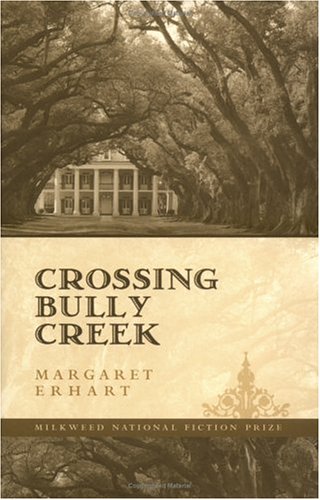Crossing Bully Creek
Crossing Bully Creek is likely to be mentioned in the same breath with Faulkner because they share some commendable commonalities: a rich ability to evoke a sense of the South, an incredible fluidity of language, and a deep sensitivity and ability to perceive. However, to dismiss Milkweed Editions’ National Fiction Prize winner as “a Faulknerian novel” does it a grave disservice, because it is no imitator or wanna-be; instead, it is a memorable experience of a network of Southern lives in times of amazing change.
The novel takes place in southern Georgia, near the Florida border, mostly on and around the plantation of Henry Detroit. Henry is dying in 1969, when most of the action takes place, but it is barely adequate to call Henry the “main character.” The chapters are divided into impressionistic sketches that occur between 1929 and 1969, told through the eyes of at least twelve different characters, with their own stories and perspectives. Erhart does a brilliant job of actualizing all of these people in only a few pages, but two favorites were Cole Jones, a white plantation employee who falls for Detroit’s married daughter, and Roosevelt Davis, an intelligent, epileptic black boy who comes to work in Detroit’s kennels, and may be destined for more. The changing nature of race relations is certainly an overarching issue in the novel; the death of white plantation owner Detroit at one high point of the Civil Rights Movement may be interpreted symbolically, but many of the most engaging ideas and exchanges happen on an individual, not archetypal, level. Many stories contain murky questions that are only clarified later, in another character’s story thread, as Erhart weaves the disparate impressions into a whole picture. Crossing Bully Creek demands a bit of attention, but the experience is well worth it.










